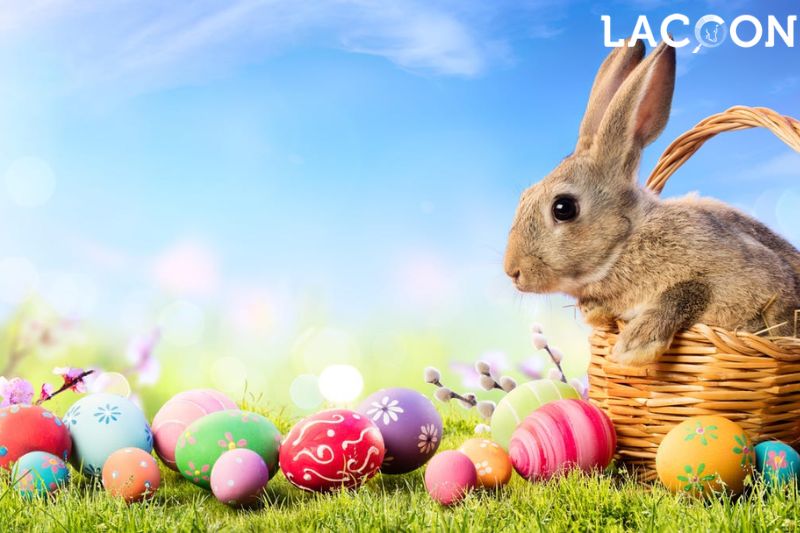Easter is a widely celebrated holiday, and one of its most recognizable symbols is the Easter Bunny. The furry creature is often depicted carrying a basket of eggs. It has become a beloved part of the Easter tradition.
But who invented the easter bunny? In this article, Lacoon will explore the origins and the fascinating history behind its invention.
Where Does the Easter Bunny Come From?

The idea of the Easter Bunny comes from Germanic folk beliefs before Christianity.
The old Germanic people worshipped a goddess named Eostre, who was also called Ostara. She was linked to spring and the start of a new life. Folklore says that Eostre was often shown with a hare by her side.
People used to think that hares were signs of fertility and new life. So, they are a good match for the goddess of spring.
As Christianity spread through Europe, the new religion took up many old practices. Easter, a Christian holiday that marks the resurrection of Jesus Christ, started to be celebrated around the same time as a pagan holiday that honored Eostre.
Over time, the hare connected to Eostre changed into the Easter Bunny we know today. It is becoming a sign of fertility and new life in the Christian world.
Why Does the Easter Bunny Bring Eggs?

The story of the Easter Bunny bringing eggs dates back to the 1300s in Germany. Eggs have been a symbol of new life and rebirth for a long time, which are also important parts of the Christian holiday of Easter.
During the 40 days of Lent before Easter in the Middle Ages, Christians were prohibited from eating eggs. Eggs were often hard-boiled to keep them fresh until the end of Lent. They were given as gifts or used in special meals at that time.
German myth is the source of the idea that the Easter Bunny brings eggs. In the 17th century, the Osterhase, also called the Easter Hare, became a character who would lay colored eggs in nests that children had made.
This practice was probably based on other egg-related customs and the fact that the hare was linked to Eostre, the goddess of fertility and spring, who was often pictured with eggs.
When Did the Easter Bunny Come to America?

In the 18th century, German immigrants brought their Easter customs and traditions to America, including the Osterhase character with its egg-laying activities. They primarily settled in Pennsylvania.
Over time, the Easter Bunny became an accepted and popular symbol of the Easter holiday in the United States.
The character evolved and began to take on new customs. In addition to laying eggs, the Easter Bunny started to deliver gifts, candies, and chocolates in baskets to children during the Easter season.
This new tradition likely emerged as a result of commercialization and the increasing availability of mass-produced sweets and toys.
What Does the Easter Bunny Look Like Today?

The Easter Bunny as we know him today has changed significantly. The original Osterhase was just a simple hare, but the Easter Bunny of today is usually shown as a big, humanized bunny.
The figure was usually shown wearing a vest or bow tie and carrying a basket full of eggs, candy, and other treats.
It’s getting more and more famous, and it’s now a big part of many books and movies. It is often shown as a kind and giving figure who brings treats and happiness to children at Easter.
The Easter Bunny has also become a regular part of many neighborhood events and celebrations.
There are Easter Bunny parades, appearances, and egg hunts in many places around the world to entertain kids and families. This helps the character’s place in modern Easter customs.
Conclusion
The Easter Bunny has evolved significantly from its origins in old Germanic pagan stories. Despite having no religious significance, it has become a symbol of new life, rebirth, and the festive atmosphere of the holiday.
Although its appearance and adaptations have changed over time, the Easter Bunny remains a popular and cherished figure that brings joy and celebration to people worldwide during the Easter holiday.





